Bubba and Rio’s Great Adventure
Since 2007, two endangered black pond turtles, Bubba ’23 and Rio ’23, have been living in Saint Joseph’s Biodiversity Lab under the care of Scott McRobert, PhD, and his students. After 15 years, it’s finally time for them to make their return to the wild.
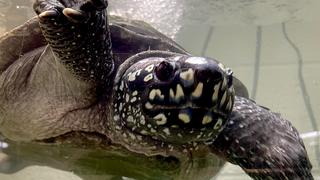 Bubba '23
Bubba '23
When Bubba ’23 and Rio ’23 first arrived in Scott McRobert, PhD’s lab, they were just a few inches across in size. They came to live in the Saint Joseph’s Biodiversity Lab in 2007, along with four other black pond turtles from the Turtle Survival Alliance (TSA). Now, after 15 years, they’re ready to learn to live on their own.
This turtle species is native to India and the babies are covered head to toe in white polka dots.
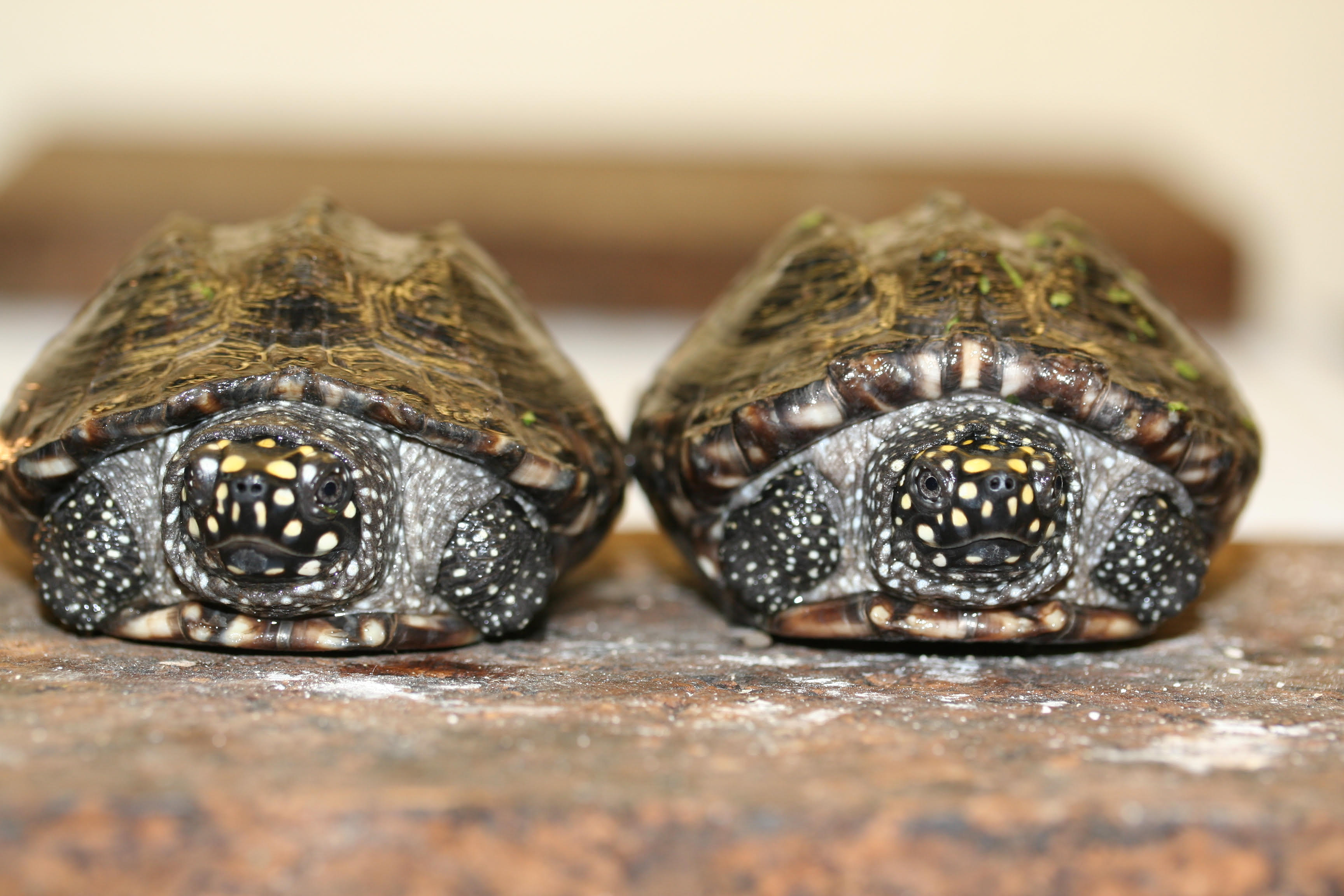
“They look so captivating, I had been trying for years to get my hands on some,” explains McRobert, professor of biology. “We were thrilled to finally have them in the lab but, unfortunately, being an endangered species, the literature on them isn’t so great.”
Although McRobert’s lab was well equipped to care for the little turtles, there was no observational research or records to indicate just how big they would eventually become. And on top of their rapidly increasing size, the black pond turtles — like most Asian turtle species — were too aggressive to cohabitate.
“Initially, our intention was to breed them,” says McRobert. “But once we saw the amount of space they would need, we knew we’d taken on too many.”
After five or six years in the lab, four of the six turtles were relocated to the Denver Zoo by the TSA, leaving Bubba and Rio as the stars of Hawk Hill’s Science Center.
“They loved to see people,” recalls Courtney Parks ’23 (MS), who channeled her passion for turtles into caring for creatures in the Biodiversity Lab during her time at Saint Joseph’s. “Whenever students were in the lab, Bubba would swim up to the top of his tub and splash his arms out to greet them. He was so social.”
At one point, Parks transferred Bubba to a larger tub to accommodate his size but he stopped eating and wouldn’t emerge from the water to socialize. Parks and McRobert quickly decided that, although smaller, his original tank was obviously better for his mental health.
Rio was a bit more reserved with visitors, but still enjoyed a lookee-loo here and there. He mostly kept to himself and allowed students to observe and marvel at his size and behavior.
All [turtles] have their own personalities . . . Learning their unique behaviors is the only way you can truly care for them.
Lauren Schnell '23 (MS)
“That’s the thing you have to understand about turtles,” says Lauren Schnell ’23 (MS), another of the turtles’ devoted caretakers. “They all have their own personalities. There are lots of little nuances and vibes you have to pick up on when studying a group of them. Learning their unique behaviors is the only way you can truly care for them.”
When McRobert realized it was time to start exploring relocation options for Bubba and Rio, the first thing he did was speak with Parks (who had recently graduated) and Schnell, who will be graduating in December.
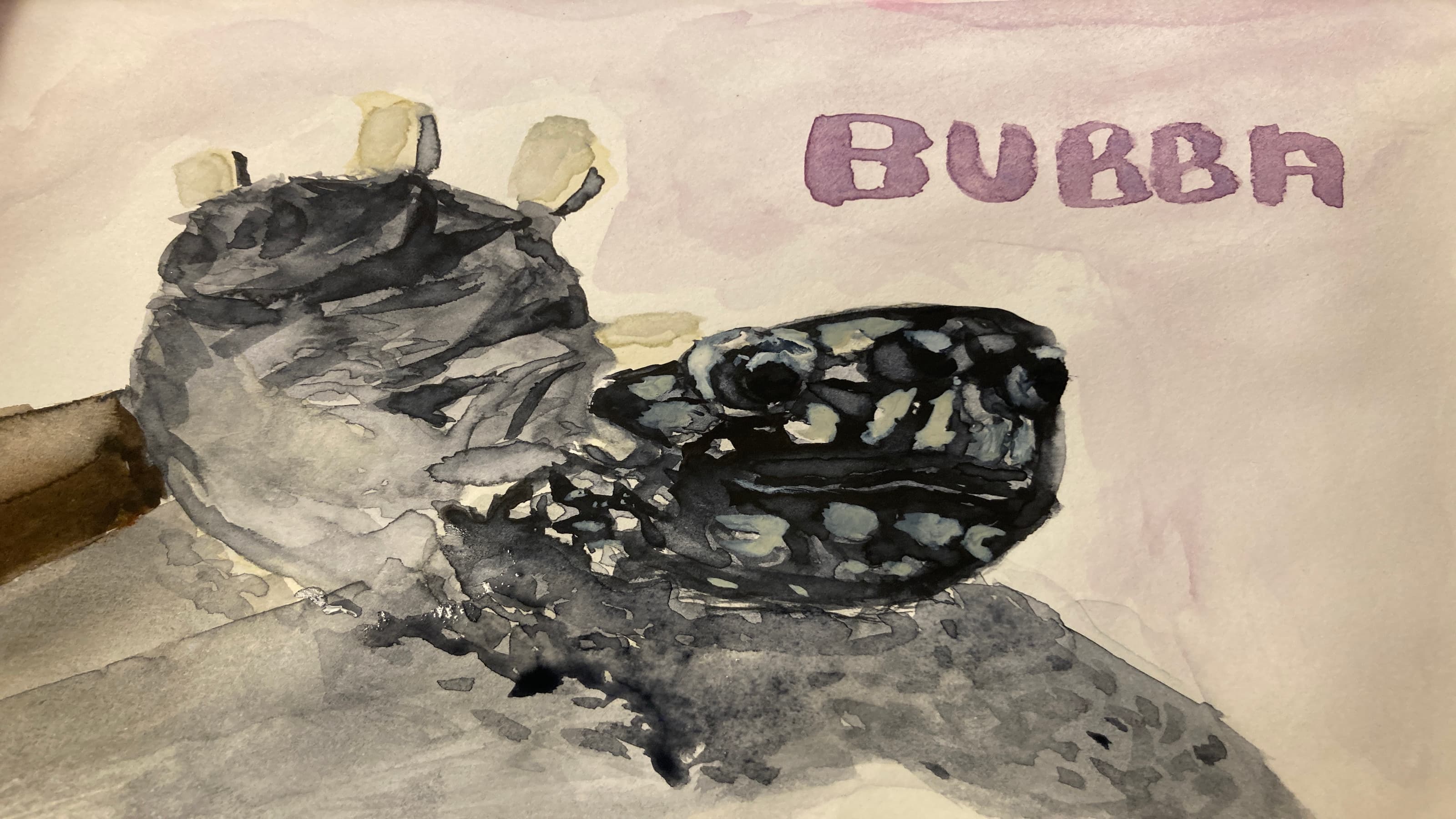
“There are no two students that care for turtles the way these two do,” says McRobert. “They have this passion and this drive for animals that you cannot manufacture. It is this innate compulsion to go stand in the woods for hours waiting to see a turtle and, then, even if you don’t, you go out the next day and try again.”
Parks and Schnell were asked to accompany Bubba and Rio on a trip down to South Carolina, where the TSA’s turtle sanctuary is. The decision was a bittersweet one to make — the turtles needed more space to live, so relocating them to an open-air pond was in their best interest, but the joy and education they brought to the lab would be sorely missed.
To add to the pain of saying goodbye, McRobert and his students were honestly nervous. They’d never been to the TSA’s sanctuary. What if it didn’t look like a good fit? So they came up with a plan. If Parks and Schnell got down to the TSA and didn’t like what they saw, they would contact McRobert with a safe word: porcupine.
“I told Courtney she could shoot me a text or give me a call and just say, ‘and how are things with the porcupine?’ so I would know that I had to quickly get the turtles and her and Lauren back up to St. Joe’s.”
As it turned out, the TSA’s grounds were stunningly beautiful and home to over 200 endangered turtles.
Parks and Schnell took a 14-hour drive down to South Carolina after teary goodbyes were said to both turtles by a gaggle of students at the Science Center. That evening, they smuggled Bubba and Rio into their motel room at dusk, hyper aware of the “no animals allowed” signs affixed to all exterior walls of the building. They changed their water in the bathtub and spent a sleepless night listening to Bubba and Rio scratch confusedly at the totes they were being transported in.
The next morning, they got to the sanctuary and it took their breath away.
“It was truly just such a magical place for someone who feels the way we do about turtles,” says Parks. “There were a variety of enclosures and houses and facilities. Very top of the line accommodations for the turtles.”
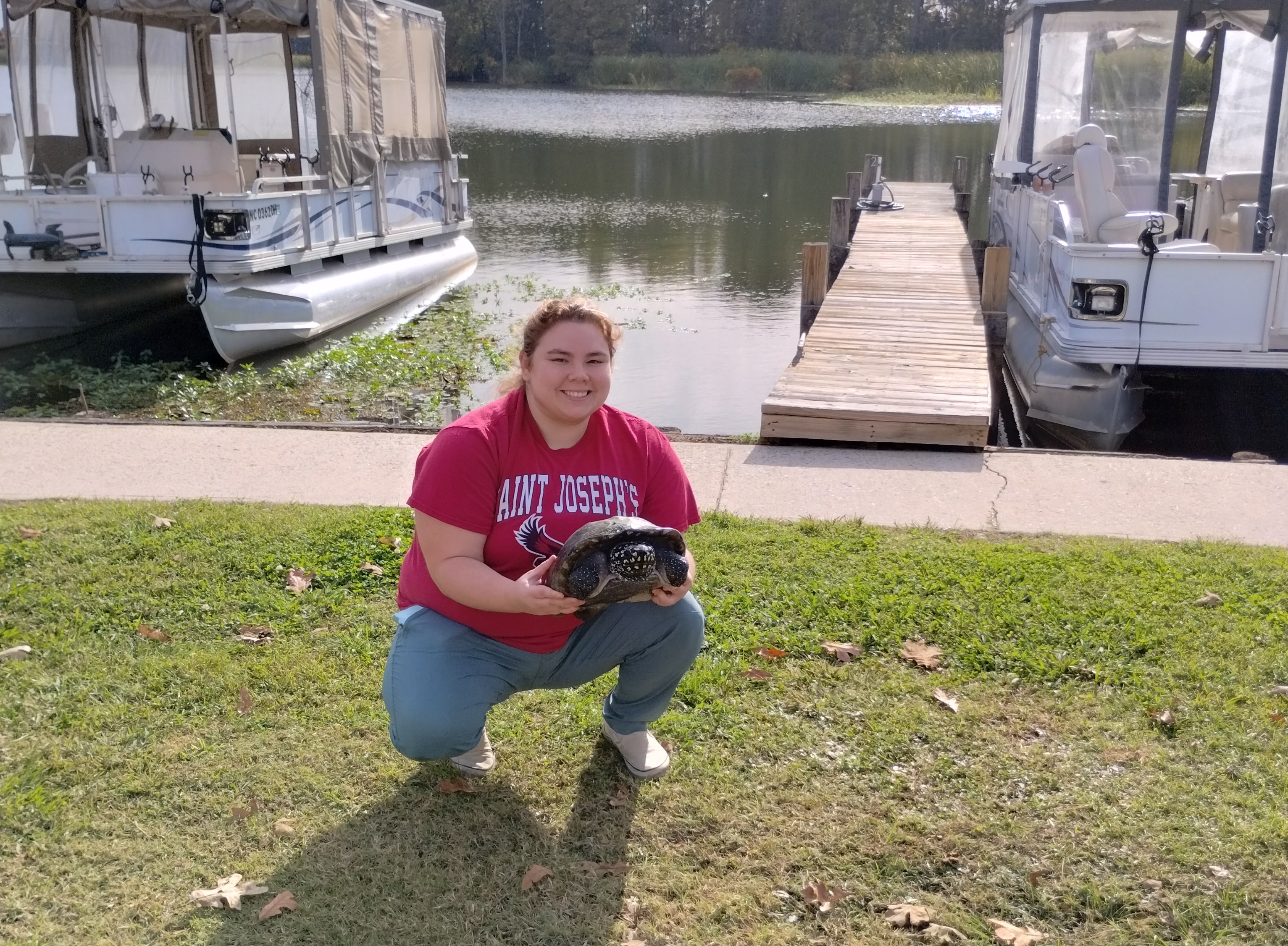
“It was amazing,” agrees Schnell. “Because it was South Carolina, so we weren’t just seeing these big turtles walking around and these giant ponds, but there were lizards skittering by and frogs here and there. It was just like walking into heaven.”
Once they got to the TSA, Bubba and Rio were quickly whisked away into quarantine to begin the process of acclimating to their new environment. Although their quarantine will only last 90 days, Bubba and Rio will stay in tanks until spring time to avoid throwing them suddenly into their first-ever hibernation. Once they join the other large turtles in the pond, they’ll begin learning how to find their own food and fend for themselves in their natural environment.
So will we ever see Bubba and Rio again?
Parks certainly will.
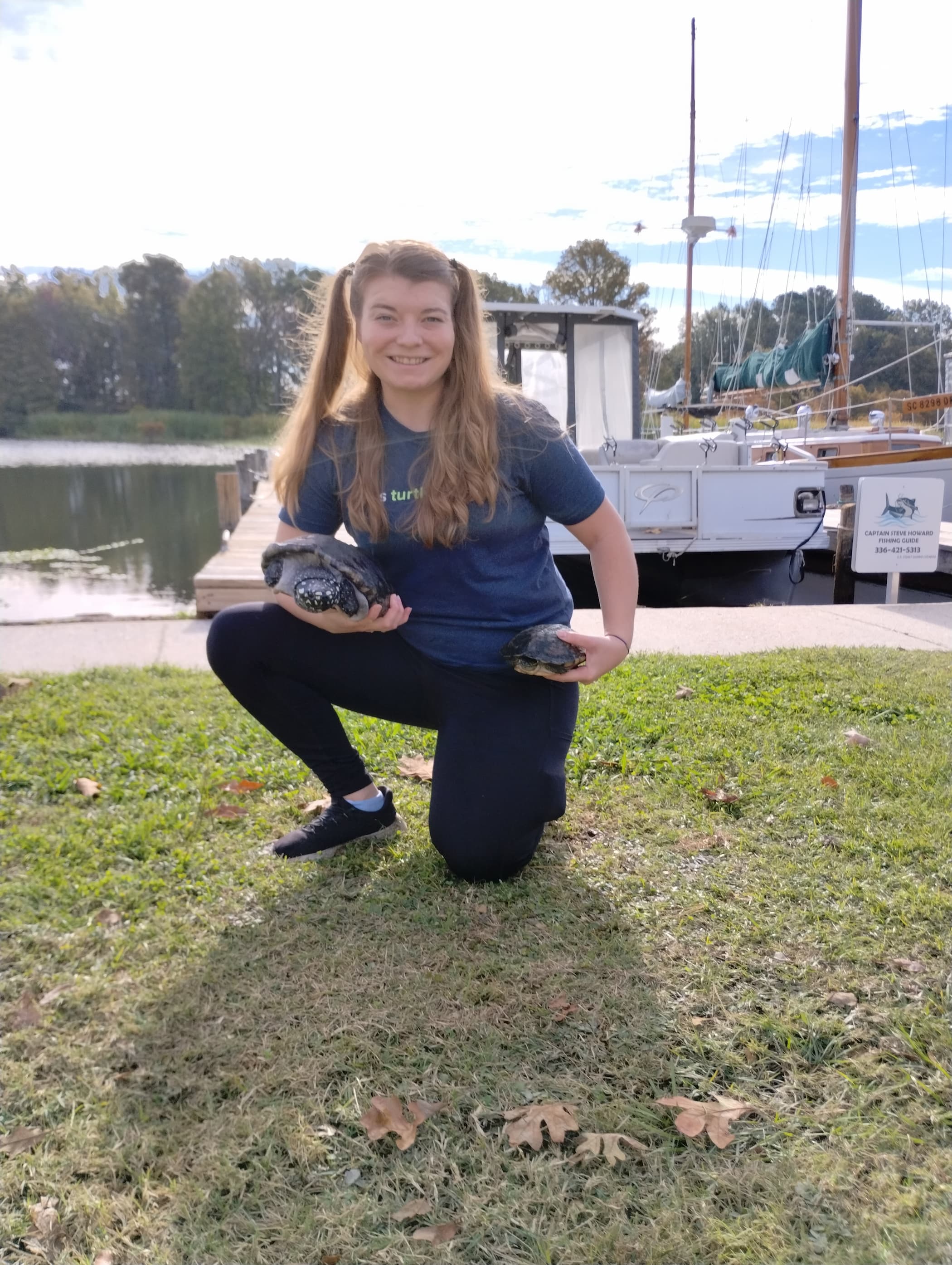
“I’ve already decided that, going forward, each October will be Turtle Month for me,” she says. “There are already multiple annual turtle conferences in October that I want to attend, but now I’m also going to add in a big trip down to the TSA where I can help out with the turtles and hopefully catch a glimpse of Bubba and Rio.”
McRobert will miss Bubba and Rio dearly, but is also looking forward to working more intentionally with the TSA to bring a rotating exhibit of endangered turtles into his lab for educational purposes.
“I want to give students the opportunity to observe and care for all different types of endangered turtles that we don’t know too much about,” he says. “The Biodiversity Lab is such a unique experience for our students at St. Joe’s already. And if we have this partnership, there’s no reason we shouldn’t try and source all the species we can for our research.”
For now, McRobert, Parks and Schnell are all eagerly awaiting to hear how Bubba and Rio are doing in their quarantine.
Learn more about studying biology at Saint Joseph's University.
